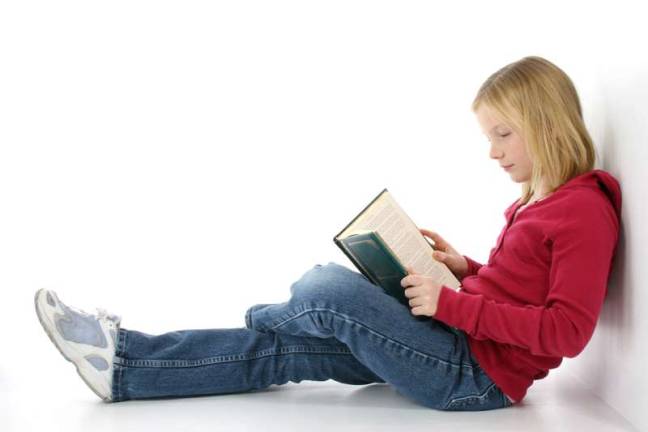Why reading hard copy books gets results

I teach 7th grade English in a school obsessed with reading. Where I teach, more than 60 percent of kids are “reading below grade level,” it makes sense to focus on boosting literacy. All teachers, regardless of subject, have signs on their doors with what they are reading, the principal hosts near-weekly book club lunches, and 30 minutes of my double block class are devoted to kids reading absolutely anything they want independently.
It's working. The library is the beating heart of our school, almost as popular as the cafeteria at lunchtime and even the spot where kids cutting class often turn up. When I help students clean out their backpacks, I see more books than notebooks or other academic materials, extras stashed away “just in case.”
I'm not one to bash e-books. During reading time, some students have Kindles and others enjoy books on tape. We read some nonfiction online, learning about news the way most adults do today. But hard copies help transform classrooms of readers into a reading community. One of the big skills my students learn is annotation, which is invaluable in helping them synthesize ideas. My students go through thousands of sticky notes; a classroom photo features reading partners, with their annotations from one book spread out and completely covering three desks. As they are planning a literary essay, students are eager to bring me back to the page where they realized something important. During classroom discussions, they flip wildly through their flagged pages to find the perfect quote.
My classroom library also makes the process of choosing a book organic and student-centered. It's organized into bins from genre (“Horror”) to whim (“In the mood for something quick and wacky?”) to audience (“If you loved The Lightning Thief”) that are inspired and rearranged by the students. Students who find that simply shelving a book in the favorites bin won't do might put sticky note recommendations right on the back cover along with the professional reviewers. I particularly enjoy the rare treat of younger siblings finding old annotations from siblings in years past.
The draw to well-worn spines or shiny covers is as powerful in the age of smart phones as it was when I was a kid. I've almost started a riot opening a new box of books for our classroom library. I've watched kids hug and kiss old favorites when they discover them on my shelves. When the latest book of a hot series is released, the hand-off from one reader to the next is filled with suspense and promise. And I've caught as many kids sneaking “just one more chapter!” inside their desks as I have texting or snapchatting.
—Nicole Dixon, 7th grade English teacher